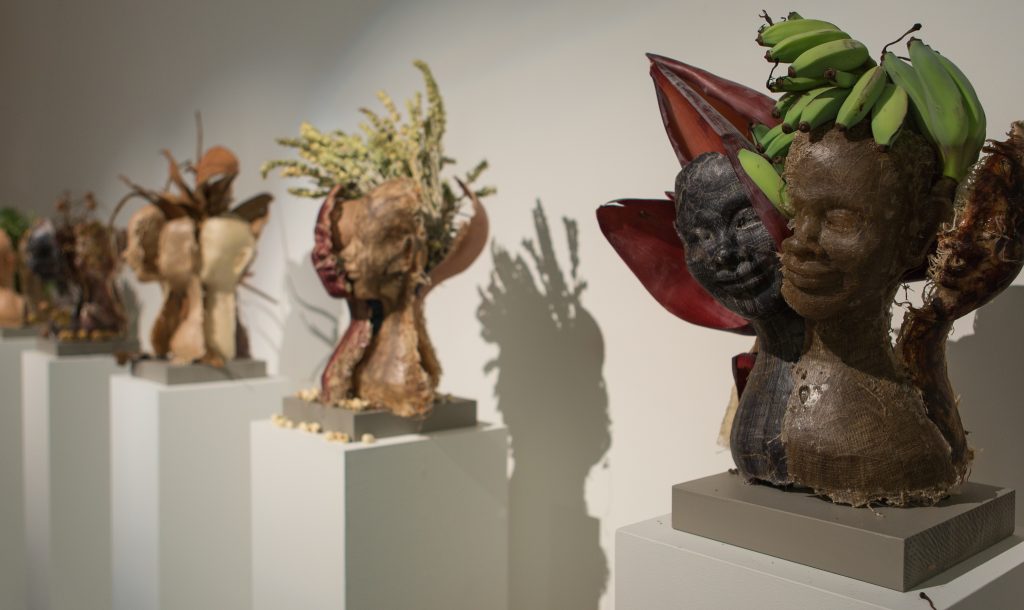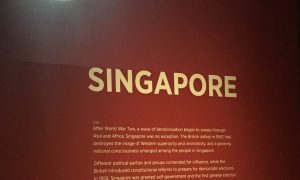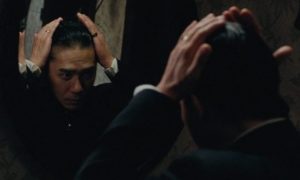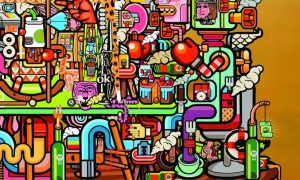Phaptawan Suwannakudt’s ‘Retold-Untold Stories’ was co-curated by Clare Veal and Yvonne Low, and was shown at the SCA Galleries in Sydney in 2016. Both Veal and Low will be speaking at the Power Institute’s ‘Gender in Southeast Asian Art Histories’ symposium. As the symposium organisers say,
Studies focused on gender in Southeast Asian societies have emerged, in recent decades, in approximate concurrence with the development of regionally focused Southeast Asian art histories. The founding premise of this international symposium is that there has to date been insufficient intersection between these two fields.
As the first symposium of its kind, Gender in Southeast Asian Art Histories aims to establish the parameters of current research, and to develop inter-disciplinary and transnational frameworks for future studies in the field.
Bringing together a range of scholars working on the pre-modern, modern, and contemporary, we seek to consider new perspectives and methodological approaches brought to the fore in art history through studies that are attentive to gender, or how we might reassess art historical narratives through the lens of gender.
And if this isn’t enough to grab your attention, the symposium will open with a keynote address, ‘Figuring the Buddha’, by Professor Ashley Thompson, Hiram W. Woodward Chair in Southeast Asian Art at SOAS, University of London. In this keynote, she will examine the historical unfolding of the Buddha’s story in a range of Cambodian contexts, its various portrayals that render it beyond traditional gender binaries, and the social challenges that come with this.
You can find the full program here, as well as details on the launch of new journal Southeast of Now: Directions in Contemporary and Modern Art in Asia and Wulan Dirgantoro’s Feminisms and Contemporary Art in Indonesia: Defining Experiences.
‘Retold-Untold Stories’ by Phaptawan Suwannakudt
Exhibition review by Natali Pearson, first published in Eyeline, no. 86, 2017.

Installation view: Phaptawan Suwannakudt’s ‘Retold-Untold Stories’. SCA Galleries, Sydney, 16 March – 30 April 2016. Curated by Clare Veal and Yvonne Low.
Stories – their telling and re-telling, and how to make meaning from them across generations and cultures – feature at the warm heart of artist Phaptawan Suwannakudt’s latest exhibition, ‘Retold-Untold Stories’, at SCA Galleries (16 March – 30 April 2016). In her insightful catalogue essay, co-curator Clare Veal reminds us that Suwannakudt’s artistic practice has long involved telling stories as a way of building empathetic connections with others. ‘Retold-Untold Stories’ builds on this process by weaving together the role of language, memory and interpretation at the same time as it invites the audience to join the conversation.[1]
This is the show’s second iteration, having developed out of a 2014 Asialink residency at Ne’-Na Contemporary Art Space in Chiang Mai, northern Thailand. Here, Suwannakudt forged connections with women from the local Lanna community, while also attempting to trace her family’s history through the fragmented memories of her mother, born in Chiang Mai and increasingly affected by dementia.
Although a well-established artist in her own right, Suwannakudt is frequently introduced in relation to her famous father, Thai mural painter Paiboon Suwannakudt (Tan Kudt). He supported his daughter’s artistic interests, and, as a child, she often accompanied him to the Buddhist temples that were his workplace. However, her gender precluded her from entering certain parts of the temple grounds, and she became increasingly cognizant of the barriers to participation in Thai society: ‘I was made aware since I was a child that I certainly belonged to a different category and almost different species […] in the community. There was a different code of conduct for me and the boys during the daily routine at the site in the temple where my father worked.’[2]
After Tan Kudt’s death, Suwannakudt broke with tradition by leading her father’s all-male team of mural painters on a number of high profile projects in temples and hotels, before deciding that she no longer wanted to work ‘with her back to the world.’[3] This decision was prompted by the troubling discovery that, beyond the temple walls, young girls were being sold into brothels, sometimes by their own parents. Suwannakudt’s ‘heightened awareness of the role gender plays in shaping the personal experiences of women’[4] prompted her Nariphon series, first exhibited in 1997 at ‘Womanifesto’ in Thailand. Thai mythology tells of the Nariphon plant, which bears fruit in the shape of young girls. In this series, which features three young girls, the paintings’ coloured backgrounds transition from vibrant green, to blood red, and finally to withered brown. The Nariphon girls, and the girls beyond the temple walls, suffer the same fate as a freshly picked flower; ripe with potential but economically and socially disempowered by their gender. Their destiny is written from the moment of birth.
The Nariphon series was created in Australia, where Suwannakudt had moved in 1996. Following her re-location, she continued to draw upon Thai mural painting as a means of visual language, re-assessing its applicability and the process of creation in an Australian context. Rather than painting figures, as she had anticipated, Suwannakudt initially found herself attracted to the Australian trees, flowers and houses. She has likened this period to the experiences of Hans Christian Andersen’s little mermaid, who sacrificed her voice in order to transition from her old world to a new world.[5]
However, in ‘Retold-Untold Stories’ Suwannakudt turns her gaze from Australia back towards Thailand, affording her – and her audience – the opportunity to consider it anew. In so doing, it is not her father’s influence that emerges as formative, but her mother’s.
This is not the first time Suwannakudt’s work has centred on her mother. In My Mother was a Nun (1998), painted on two strips of cloth brought with her from Thailand, Suwannakudt reflects on her mother’s experiences of inequality in a Buddhist sangha (spiritual community). When Suwannakudt was a child, her mother became a Buddhist nun in the hope of making a spiritual contribution. Instead she was placed on domestic duties, including cleaning the kitchen. She disrobed after just a few months, deeply disappointed with the discrimination she had encountered due to her gender.
‘Retold-Untold Stories’, however, offers an alternative view on this period in her mother’s life. In There, there (2014. Mixed media and organic matter, dimensions variable. Figure cast: fabric and resin 30 x 30cm), five identical, youthful faces smile serenely back at us, eyes closed in apparent contentment. This is, again, the artist’s mother as a nun. Suwannakudt crafted the fabric masks from memory, prior to her return to Chiang Mai in 2014. In effect, she brings her mother back from the ravages of dementia to full being.

Phaptawan Suwannakudt, There, there, 2014. Mixed media and organic matter, dimensions variable. Figure cast: fabric and resin 30 x 30cm.
Each gracious face is split apart at the crown, from which emerges an abundance of foliage – crimson banana blossoms, branches from a gum tree, rosemary from the artist’s own garden. The destroyed, smiling faces are as shocking as they are joyous. Return visitors to the gallery are rewarded with fresh offerings from the market each week, as the artist acts out a ritual she is unable to perform in person – that of tending to her mother. A mother herself, Suwannakudt here performs the routines of giving so often associated with motherhood, caring for her mother in the same way her mother did for her when Suwannakudt was a child. This work immediately invokes the responsibilities of caring for a beloved elderly family member. In so doing, There, there transforms her mother’s gendered temple experiences into something to be honoured rather than regretted.

Phaptawan Suwannakudt, There, there (detail), 2014. Mixed media and organic matter, dimensions variable. Figure cast: fabric and resin 30 x 30cm.

Phaptawan Suwannakudt, There, there (detail), 2014. Mixed media and organic matter, dimensions variable. Figure cast: fabric and resin 30 x 30cm.
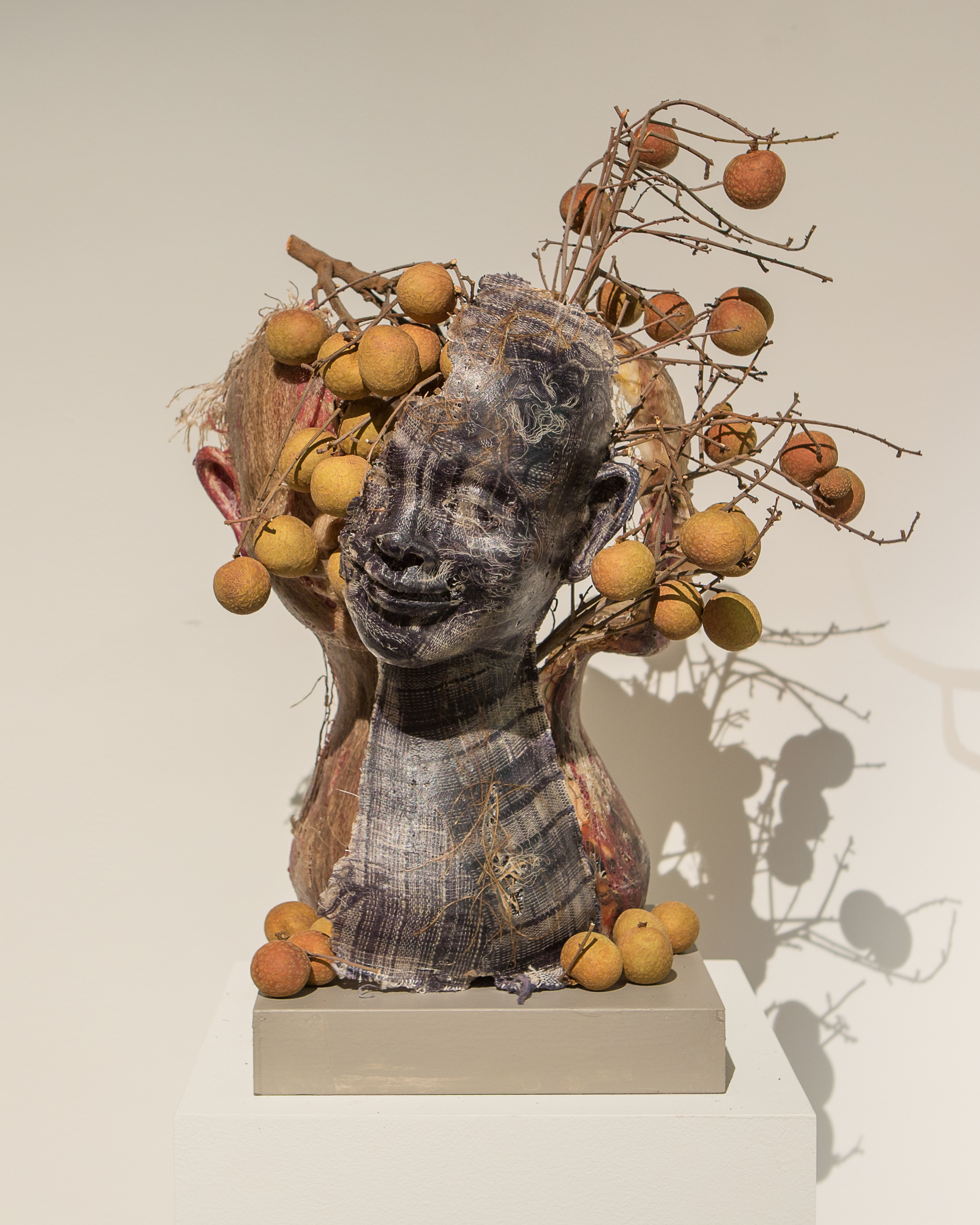
Phaptawan Suwannakudt, There, there (detail), 2014. Mixed media and organic matter, dimensions variable. Figure cast: fabric and resin 30 x 30cm.
Though all three artworks in ‘Retold-Untold Stories’ incorporate some type of organic matter, nowhere is it used to such sensual effect as Let me tell you child (2014. Mixed media and organic matter, dimensions variable. Alphabet cast: fabric and resin). Fabric and resin casts are fashioned into vessels that hold herbs, spices, nuts and leaves. The small gallery is filled with a heady and unidentifiable fragrance – one that is, in fact, uniquely Australian. In its first incarnation in Chiang Mai, this work incorporated produce gathered at the local markets in northern Thailand. Australia’s restrictive quarantine laws prevented Suwannakudt from re-creating the original work in its entirety, inadvertently resulting in a greater artistic engagement with the Australian landscape: galangal and candlenut still feature, but so too do eucalyptus leaves and other Australian flora.

Phaptawan Suwannakudt, Let me tell you child, 2014. Mixed media and organic matter, dimensions variable. Alphabet cast: fabric and resin.
These vessels are not just symbolic. They take the form of Thai script, albeit in reverse. This script is reflected back to us by a (deliberately too small) mirror at the far end of the gallery. To view the script in its entirety, the audience must move around the work, bend down, and look back up at its reflection. Suwannakudt is asking us to engage with the work, to have a bodily conversation through scent and movement – but even then the message is intentionally obscured, for not only is this script in Thai but the dialect is Lanna, thus rendering its message incomprehensible to all but a discrete language community. It bears reminding that this work was first exhibited in Thailand, where the number of Lanna speakers is likely to have been significantly higher than its 2016 Australian audience.

Phaptawan Suwannakudt, Let me tell you child, 2014. Mixed media and organic matter, dimensions variable. Alphabet cast: fabric and resin.

Phaptawan Suwannakudt, Let me tell you child (detail), 2014. Mixed media and organic matter, dimensions variable. Alphabet cast: fabric and resin.
This work is in fact a poem, recounted to the artist by the daughter of a female Lanna scholar after the latter’s passing. The transfer of knowledge to Suwannakudt, and her subsequent artistic intervention, renders oral history both visible and fragrant. The spice-filled vessels transform into a means by which Suwannakudt communicates her understanding of how women’s creative achievements contribute to cultural empowerment in northern Thai communities. These are stories that have been told, and re-told.
Veal notes that the difficulty in rendering intelligible both the Thai script and the Lanna dialect ‘draws into focus the central function of language in Phaptawan’s work as a means of communicating the authenticity of one’s own (gendered) experience.’[6] How then, Veal asks, can one find a space to share this experience when the language used to convey it is unknowable?
Language, script and mark-making are also employed in Broken the spell (2014. Mixed media, dimensions variable. Hanging sculpture: handmade paper, tea, coffee, hand-dyed thread, 90 x 30cm). This installation takes as its starting point the practice of sacred tattooing in Lanna communities, traditionally an exclusively male activity. Suspended sheets of handmade paper reveal text inscribed in tea and coffee, pierced by white cotton thread. Tangled threads hanging from the paper lay pooled on the floor, suggesting an unfinished conversation. In this work, the act of piercing paper rather than skin becomes a gentle performance of awareness. Suwannakudt challenges the privileged male voice, and transforms it into something both meditative and wholly feminine.
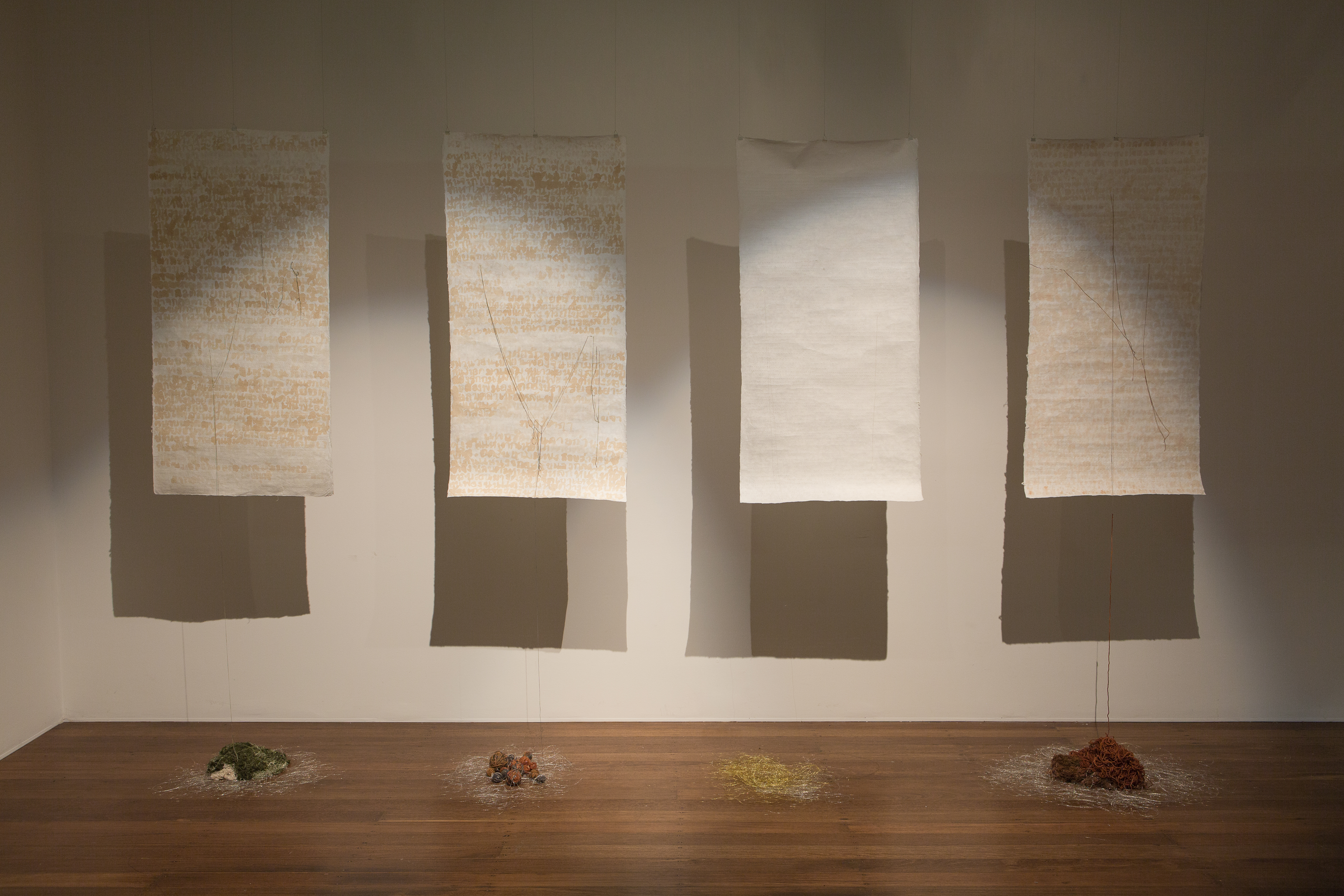
Phaptawan Suwannakudt, Broken the spell, 2014. Mixed media, dimensions variable. Hanging sculpture: handmade paper, tea, coffee, hand-dyed thread, 90 x 30cm

Phaptawan Suwannakudt, Broken the spell (detail), 2014. Mixed media, dimensions variable. Hanging sculpture: handmade paper, tea, coffee, hand-dyed thread, 90 x 30cm
Having graduated from Sydney College of the Arts with a Master of Visual Arts in 2005, this may be Suwannakudt’s final exhibition at her alma mater. In a decision that surprised many in Sydney’s arts community, the University of Sydney announced in June 2016 that it would close its Lilyfield campus and merge the visual art faculty with that of the University of New South Wales (Ed: this decision was subsequently amended, such that SCA is now being incorporated as a department within the University of Sydney’s School of Literature, Arts & Media). While it is unlikely that Suwannakudt, or her co-curators Clare Veal and Yvonne Low, were aware of the venue’s imminent closure, ‘Retold-Untold Stories’ serves as a fitting farewell for Suwannakudt. It demonstrates the importance of institutional support – from organisations such as the SCA, the Power Institute Foundation for Art and Visual Culture and the Cruthers Art Foundation, all of which made ‘Retold-Untold Stories’ possible – in rendering women’s art more visible. Here, in the intimate and safe space of the SCA’s smallest gallery, Suwannakudt invited her audience to glimpse stories both personal and poignant – stories that resist easy explanation and urge us to continue the conversation she has started.
References
Suwannakudt, P. ‘Merpeople in a Man’s Land: The Comfort Zone of Awkwardness in Which We Dwell’, Ctrl+P Journal of Contemporary Art, no. 6, May 2007, pp. 3-6, http://www.ctrlp–artjournal.org/uploads/4/2/9/8/42984941/ctrl_p_anniversaryissue6.pdf, (accessed 22 July 2016).
Suwannakudt, P., ‘Catching the Moment, One Step at a Time’, in O. Krischer, F. Nakamura and M. Perkins (eds.), Asia Through Art and Anthropology: Cultural Translation Across Borders, London, Bloomsbury, 2013.
Suwannakudt, P., interviewed by Clare Veal and Yvonne Low, 2015, in Veal, C. and Y. Low (eds.), Retold-Untold Stories: Phaptawan Suwannakudt (exhibition catalogue), Sydney, Sydney College of the Arts, 2016.
Veal, C. and Y. Low (eds.), Retold-Untold Stories: Phaptawan Suwannakudt (exhibition catalogue), Sydney, Sydney College of the Arts, 2016.
Footnotes
[1] C. Veal, ‘Telling (her) Stories: Gender and the Work of Phaptawan Suwannakudt’ in C. Veal and Y. Low (eds.), Retold-Untold Stories: Phaptawan Suwannakudt (exhibition catalogue), Sydney, Sydney College of the Arts, 2016, p. 11.
[2] Phaptawan Suwannakudt, interviewed by Clare Veal and Yvonne Low, 2015, in C. Veal and Y. Low (eds.), Retold-Untold Stories: Phaptawan Suwannakudt (exhibition catalogue), Sydney, Sydney College of the Arts, 2016, p. 28.
[3] P. Suwannakudt, ‘Catching the Moment, One Step at a Time’, in O. Krischer, F. Nakamura, and M. Perkins (eds.), Asia Through Art and Anthropology: Cultural Translation Across Borders, London, Bloomsbury, 2013, p. 96.
[4] C. Veal, ‘Telling (her) Stories: Gender and the Work of Phaptawan Suwannakudt’ in C. Veal and Y. Low (eds.), Retold-Untold Stories: Phaptawan Suwannakudt (exhibition catalogue), Sydney, Sydney College of the Arts, 2016, p. 13.
[5] P. Suwannakudt, ‘Merpeople in a Man’s Land: The Comfort Zone of Awkwardness in Which We Dwell’, Ctrl+P Journal of Contemporary Art, no. 6, May 2007, p. 5, http://www.ctrlp–artjournal.org/uploads/4/2/9/8/42984941/ctrl_p_anniversaryissue6.pdf, (accessed 22 July 2016).
[6] C. Veal, ‘Telling (her) Stories: Gender and the Work of Phaptawan Suwannakudt’ in C. Veal and Y. Low (eds.), Retold-Untold Stories: Phaptawan Suwannakudt (exhibition catalogue), Sydney, Sydney College of the Arts, 2016, p. 16.
 Facebook
Facebook  Twitter
Twitter  Soundcloud
Soundcloud  Youtube
Youtube  Rss
Rss 